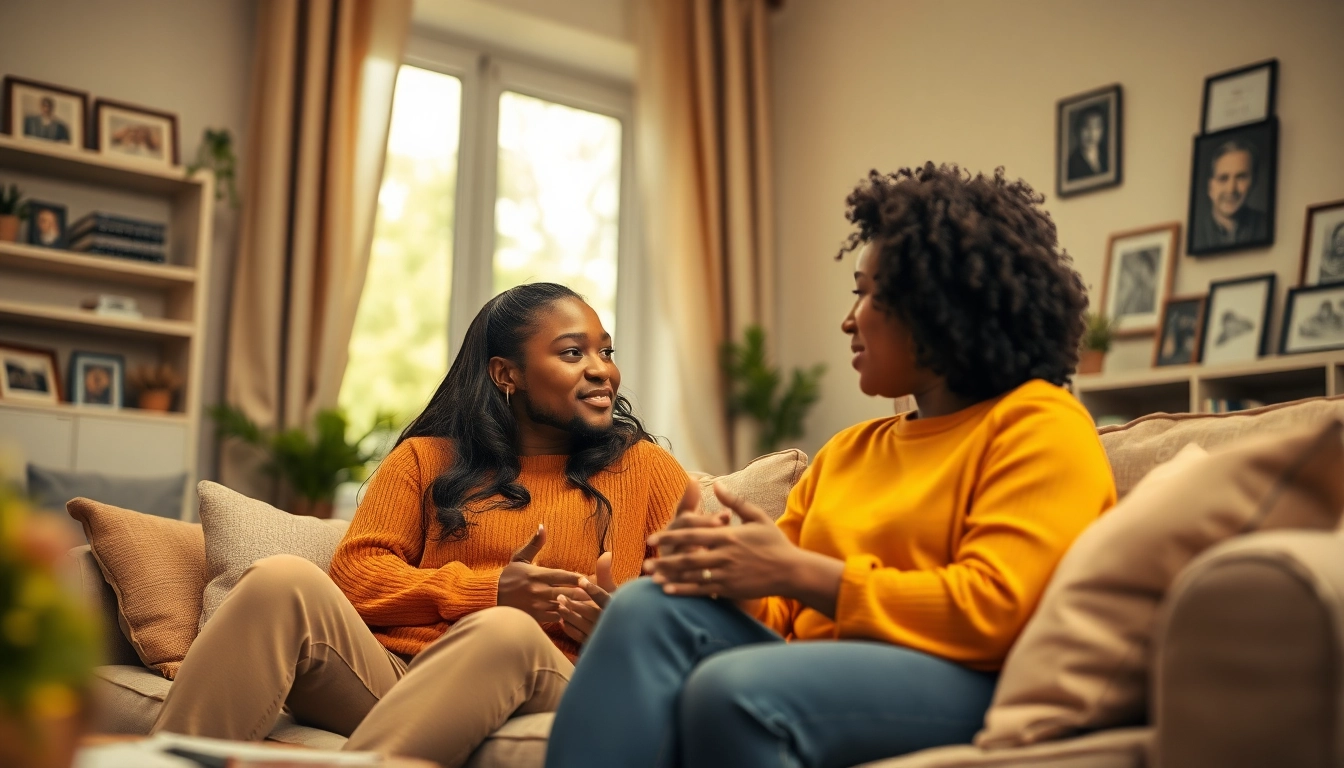Understanding Communication in Relationships
Effective communication in relationships serves as the bedrock upon which strong partnerships are built. It facilitates not only the exchange of thoughts and feelings but also fosters mutual understanding and trust. Whether these relationships are romantic, familial, or platonic, the principles of healthy communication remain consistent. In this section, we delve into the fundamentals of healthy communication, the key elements that contribute to effective dialogue, and obstacles that may hinder open exchange.
The Fundamentals of Healthy Communication
Healthy communication is characterized by openness, honesty, respect, and empathy. Each partner must feel safe and supported when sharing their thoughts and feelings. Here are some core fundamentals:
- Openness: Being willing to share thoughts and feelings without the fear of judgment strengthens bonds.
- Honesty: Transparent conversations about needs, desires, and concerns help prevent misunderstandings.
- Respect: Valuing each other’s opinions and feelings creates a supportive atmosphere.
- Empathy: Understanding one another’s perspectives fosters connection and compassion.
Key Elements that Foster Effective Dialogue
Several elements contribute to effective dialogue in any relationship:
- Active Listening: This involves not just hearing what the other person is saying but fully engaging with their message and responding appropriately.
- Nonverbal Communication: Body language, facial expressions, and tone of voice play crucial roles in conveying emotions and intentions.
- Constructive Feedback: Offering insights that are aimed at improvement rather than criticism can facilitate growth.
- Shared Goals: When both partners work toward common objectives, communication becomes more targeted and meaningful.
Common Barriers to Communication in Relationships
Despite the foundational principles of healthy communication, various barriers can arise:
- Lack of Time: Busy schedules often impede meaningful conversations.
- Emotional Baggage: Past experiences can color current communications and lead to misunderstanding.
- Assumptions: Jumping to conclusions about what the other person is thinking can create unnecessary conflict.
- Poor Communication Skills: Not everyone is taught how to effectively express themselves, leading to frustration and misinterpretation.
Importance of Active Listening in Relationships
Active listening goes beyond passively hearing words; it is about fully engaging with another person to understand their message. This skill is crucial in fostering satisfaction and harmony in relationships.
What is Active Listening?
Active listening involves several elements:
- Full Attention: Giving undivided attention shows that you value what the speaker is saying.
- Reflective Responses: Paraphrasing or summarizing what the other person has said can reinforce understanding.
- Nonverbal Affirmation: Nod, maintain eye contact, and use facial expressions that convey interest.
How Listening Enhances Relationship Satisfaction
Research shows that when partners actively engage in listening, the relationship benefits in multiple ways:
- Increased Trust: When a partner feels heard, they are more likely to open up, fostering a deeper level of trust.
- Improved Conflict Resolution: When both partners feel understood, they can address issues more constructively.
- Emotional Connection: Listening well can enhance emotional intimacy, making partners feel closer to each other.
Strategies to Improve Listening Skills
Improving listening skills within a relationship can be achieved through practice and commitment:
- Practice Mindfulness: Focus entirely on the conversation at hand without distractions.
- Ask Clarifying Questions: If unsure about what is being said, asking questions demonstrates engagement and commitment to understanding.
- Limit Interruptions: Allow the speaker to communicate their full thought before responding.
- Give Feedback: Reflect back on what you’ve heard to ensure you’ve grasped their message correctly.
Nonverbal Communication and Its Impact
Nonverbal communication often transmits more information than words. Understanding and interpreting body language can significantly enhance communication in relationships.
Understanding Body Language in Relationships
Body language includes facial expressions, gestures, posture, and proximity, all of which communicate emotional states:
- Open Posture: Standing or sitting with open arms indicates receptiveness.
- Eye Contact: Maintaining appropriate eye contact demonstrates interest and sincerity.
- Facial Expressions: Smiles, frowns, or raised eyebrows convey a range of emotions, often more effectively than words.
Expressing Emotions Through Nonverbal Cues
People often express their emotions through nonverbal signals. Understanding these cues can lead to more profound connections:
- Mirroring: Reflecting a partner’s body language can build rapport and show connection.
- Touch: A comforting touch can communicate reassurance and affection without spoken words.
- Distance: The physical space maintained during conversation can indicate comfort levels and emotional closeness.
Tuning into Your Partner’s Nonverbal Signals
Tuning into a partner’s nonverbal signals is essential for mutual understanding:
- Observe Patterns: Notice how your partner’s body language changes during different conversations to gain insights into their emotional state.
- Ask for Clarification: If their nonverbal cues conflict with their words, gently address it to deepen understanding.
- Build Emotional Intelligence: Enhancing your ability to read nonverbal signals can improve empathy and awareness.
Navigating Conflict Through Communication
Conflict is an inevitable part of any relationship. Effective communication strategies can help partners navigate through disagreements and come out stronger on the other side.
Healthy Conflict Resolution Techniques
Addressing conflict positively is crucial for relationship longevity. Here are some healthy techniques for conflict resolution:
- Stay Calm: Taking breaks can prevent conversations from escalating into emotional outbursts.
- Use “I” Statements: Communicating feelings using “I” statements helps in expressing personal feelings without placing blame.
- Focus on the Issue: Stay on topic and avoid bringing up past grievances that may complicate the current discussion.
The Role of Communication in De-escalation
Effective communication plays a crucial role in de-escalating conflicts:
- Acknowledge Feelings: Validate the emotions your partner expresses. This helps them feel understood and respected.
- Suggest Solutions: Rather than dwelling on the problem, propose constructive solutions that work for both parties.
- Revisit the Conversation: After cooling down, return to the conversation to reassess feelings without heightened emotions.
Turning Conflict into Growth Opportunities
Viewing conflicts as growth opportunities can change the dynamics of a relationship:
- Learning Experiences: Every conflict can provide insights into each partner’s needs and desires.
- Strengthening Bonds: Overcoming challenges can foster a deeper sense of trust and intimacy.
- Improved Understanding: Addressing issues can lead to better mutual understanding and respect.
Techniques for Enhancing Communication Skills
Improving communication skills takes practice and dedication. Here are several techniques to enhance these essential skills:
Open-Ended Questions and Their Importance
Asking open-ended questions encourages more expansive dialogue:
- Encourage Sharing: Instead of asking questions that can be answered with “yes” or “no,” encourage partners to share more about their thoughts.
- Foster Curiosity: Showing genuine interest can lead to deeper conversations and strengthen emotional bonds.
- Promote Reflection: Open questions prompt partners to reflect on their feelings and values, leading to greater self-awareness.
Creating Safe Spaces for Honest Conversation
Creating an environment that feels safe is paramount for honest communication:
- Choose the Right Time: Select moments that allow for dedicated attention, free from interruptions.
- No Judgment Zone: Adopt a non-judgmental attitude that fosters open and honest discussions.
- Express Vulnerability: Share personal feelings to inspire the same openness in your partner.
Practicing Empathy in Conversations
Practicing empathy helps partners understand and resonate with each other’s experiences:
- Listen Actively: Engage fully when your partner speaks, and try to put yourself in their shoes.
- Articulate Understanding: Use reflective listening to communicate that you understand their feelings.
- Be Patient: Give your partner time to express themselves, validating their feelings throughout the conversation.
In conclusion, effective communication in relationships is an indispensable skill that can be cultivated over time. It involves understanding both verbal and nonverbal cues, practicing active listening, navigating conflicts with grace, and fostering an environment of openness and empathy. By implementing the strategies discussed in this article, partners can enhance their communication skills, deepen their connection, and ultimately enjoy more satisfying relationships.



